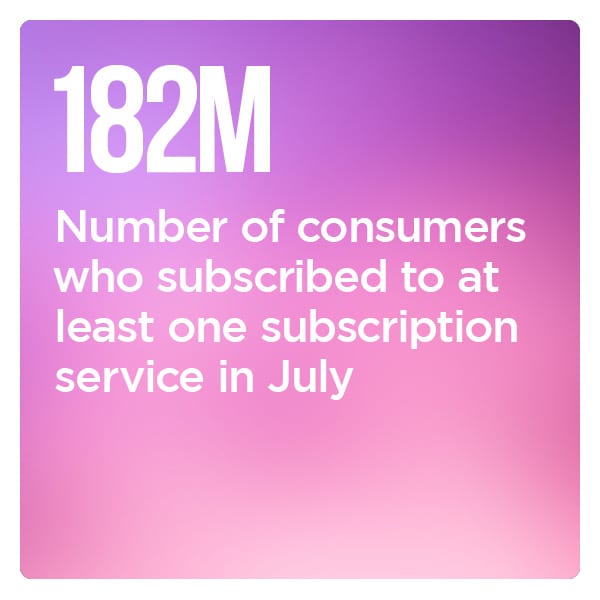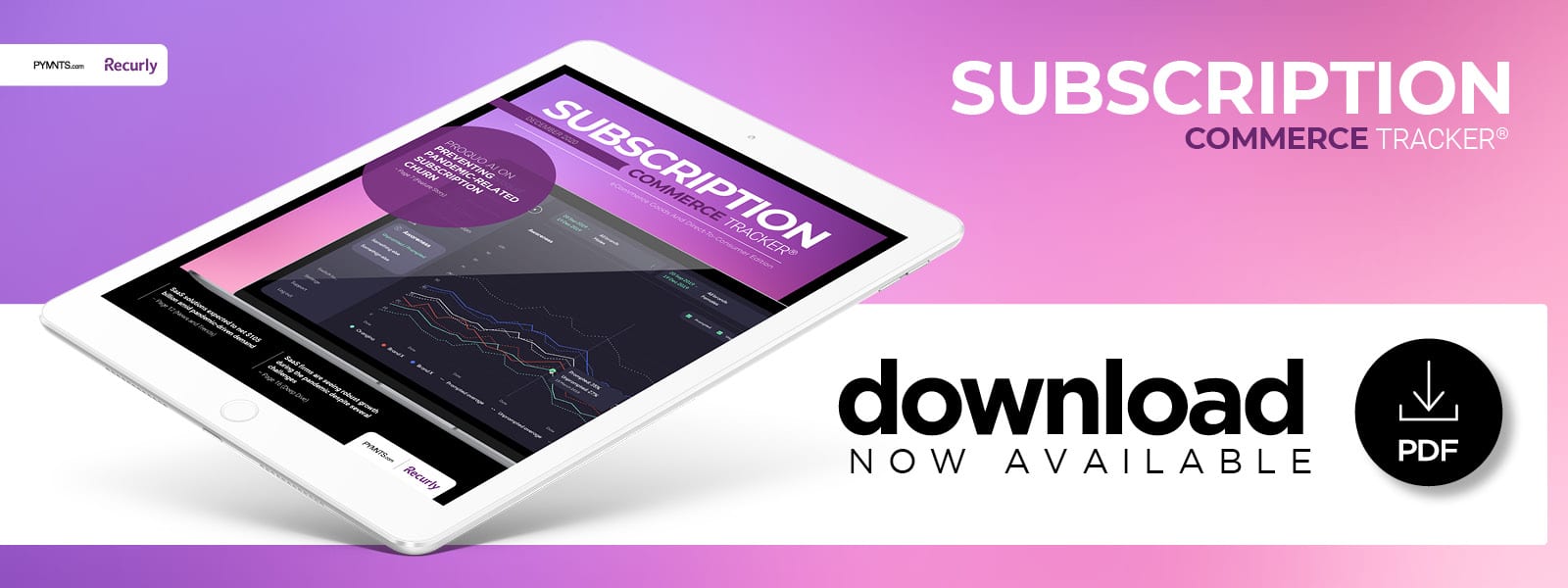 The December Subscription Commerce Tracker® explores the latest developments in the SaaS sector, as well as trends in the subscription market, as businesses seek flexible solutions to help them weather the pandemic.
The December Subscription Commerce Tracker® explores the latest developments in the SaaS sector, as well as trends in the subscription market, as businesses seek flexible solutions to help them weather the pandemic.
Around The Subscription Commerce Space
The SaaS sector’s popularity has skyrocketed during the pandemic as consumers and businesses seek subscription services to avoid making large upfront software or product purchases. These services offer alternatives to installing and operating applications in-office or at expensive data centers as well, which can be a key consideration for the many businesses with employees who are operating remotely during the health crisis. Providers also say that SaaS offerings’ limited commitments can be beneficial to companies, allowing them to reexamine their subscriptions and determine whether to continue paying for them once the pandemic has passed.
The New York Times recently made headlines when the number of its online subscribers reached a record 6 million in Q3 2020. The Times reported that it added almost 400,000 digital subscribers during the quarter, with the increase in sign-ups driven primarily by coverage of the contentious U.S. presidential election and ongoing news about the pandemic. The company began charging for its online media offerings in 2011, betting that digital content was the key to its future. CEO Meredith Kopit Levien said digital subscriptions will eventually become its biggest business.
 The popularity of streaming services such as Hulu and Sling continues to rise, but a recent survey showed that the number of Americans who subscribe to pay television is declining. It revealed that cable or satellite TV is now in less than 66 percent of the nation’s homes. Research shows that the number of households that receive some version of live TV fell to 74 percent in 2020, down from 85 percent five years ago. The report also found that one-third of customers who do not currently have a pay TV service paid for at least one such service within the past three years.
The popularity of streaming services such as Hulu and Sling continues to rise, but a recent survey showed that the number of Americans who subscribe to pay television is declining. It revealed that cable or satellite TV is now in less than 66 percent of the nation’s homes. Research shows that the number of households that receive some version of live TV fell to 74 percent in 2020, down from 85 percent five years ago. The report also found that one-third of customers who do not currently have a pay TV service paid for at least one such service within the past three years.
For more on these stories and other subscription headlines, read the Tracker’s News and Trends section.
ProQuo AI On Weathering Pandemic-Related Churn With Flexible SaaS Solutions
SaaS providers are expected to haul in $105 billion total this year, with this number projected to reach $141 billion by 2022. This does not mean that the space is without frictions, however. Many of these providers’ clients are facing pandemic-related financial strains, with some even being forced to close their operations. This, in turn, is putting these businesses under strains of their own as they work to navigate this shifting and potentially volatile business landscape. In this month’s Feature Story, Nadim Sadek, co-founder and CEO of London-based brand management software subscription provider ProQuo AI, discusses how the company aims to reduce churn and offer value to its clients as they
confront the new digital normal during the ongoing global health crisis.
Deep Dive: SaaS Solutions Emerge As Alternatives To High-Priced Upfront Product Costs

The SaaS market is predicted to become a $623 billion industry in three years, with the pandemic driving much of the industry’s explosive growth. There are still challenges that SaaS providers must face as they determine how best to satisfy the needs of their diverse, expanding client bases, however. This month’s Deep Dive explores how the convenience, flexibility and security of SaaS solutions is giving them a rapid boost in popularity during the pandemic as more and more consumers and businesses look for ways to avoid high upfront software costs.
About The Tracker
The monthly Subscription Commerce Tracker®, a PYMNTS and Recurly collaboration, offers coverage of the most recent news and trends in the subscription ecosystem.

 Subscription services are taking off during the pandemic, and software-as-a-service (SaaS) providers are no exception. Many of these solutions providers are offering key services for businesses with employees working from home, and they also provide subscription rates that can help companies better afford the costs of necessary software rather than spending big upfront to acquire products wholesale. Yet SaaS providers have not been immune to the impacts of the global health crisis, and have had to devise strategies for preventing pandemic-driven churn.
Subscription services are taking off during the pandemic, and software-as-a-service (SaaS) providers are no exception. Many of these solutions providers are offering key services for businesses with employees working from home, and they also provide subscription rates that can help companies better afford the costs of necessary software rather than spending big upfront to acquire products wholesale. Yet SaaS providers have not been immune to the impacts of the global health crisis, and have had to devise strategies for preventing pandemic-driven churn.





